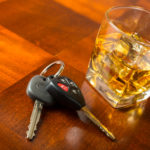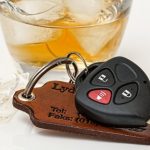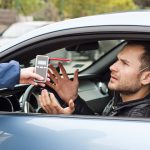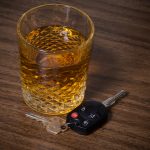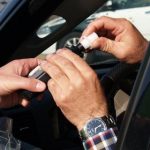The Law, Defences and Penalties For High Range Drink Driving In New South Wales
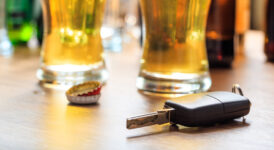
The NSW Police Force says it has charged a man from Box Hill, north-west of Sydney, with high range drink driving and driving with an unrestrained passenger four to seven years of age after members of the public contacted them at around 4am on Friday, 19 June 2020 to report that a driver mounted a kerb in Goulburn while reverse parking an SUV, before falling from the vehicle into the street.
Officers from the Hume Police Local Area Command say they arrested the man in Auburn Street in the Goulburn CBD, before conveying him to Goulburn Police Station where he allegedly blew a blood alcohol reading of 0.175.
The man was granted conditional bail to appear in Goulburn Local Court on 12 August 2020, while the pre-school child was taken home by family members.
Police say a child-at-risk notification has been made to the Department of Communities and Justice.
What is High Range Drink Driving?
Driving with a high-range prescribed concentration of alcohol is an offence under section 110 of the Road Transport Act 2013 (NSW).
It is where a person drove a motor vehicle with a blood alcohol concentration of at least 0.150.
What are the Defences to High Range Drink Driving?
The most common defences to drink driving offences are:
1. Unsafe Reading
The most frequent defence to ‘drink driving’ is that a driver’s blood alcohol concentration may have been lower at the time of driving than later when analysed by police.
Studies make it clear that a person’s blood alcohol concentration rises for between 30 minutes and 1 hour after their last alcoholic drink.
This means, for example, that if someone has a few ‘quick drinks’ and gets ‘behind the wheel’ their blood alcohol concentration may be significantly lower when driving than 30 minutes or an hour later when tested on the ‘breath analysis’ machine.
Several factors can determine whether a driver’s reading when driving was likely to be lower than when tested.
These factors include:
- age, sex and weight,
- when and what food was consumed,
- number and type of alcoholic drinks,
- time of first and last drink,
- time of ‘roadside breath test’, and
- time of ‘breath analysis’.
Depending on the particular circumstances of your case, a good lawyer may be able to obtain a ‘pharmacological report’ and use it to:
- request withdrawal of the charge;
- request reduction of the charge-type, eg from ‘high range PCA’ to ‘mid range PCA’, and/or
- to defend the charge at a hearing.
2. The ‘Two-Hour’ Rule
Police are not permitted to breath test a person more than 2 hours after the person last drove.
If they do so and seek to rely on the reading, the evidence may be excluded by the court.
3. The ‘Home Safely’ Rule
Similarly, it is illegal for police to require a person to undergo a breath test on his or her own property.
If they do so, the evidence can be excluded by the court.
4. Honest and Reasonable Mistake
This defence is available to persons who ‘honestly and reasonably’ believed they were under the limit when driving.
It is often easy to prove that a person’s mistake was ‘honest’.
However, it is becoming more and more difficult to prove that it was ‘reasonable’.
This is because there is so much advertising about not ‘drinking and driving’ at all.
However, there are a range of circumstances where the defence is available, including where a person’s drink was ‘spiked’ and they believed they were fatigued rather than affected by alcohol, and limited situations where a significant amount of time has elapsed since the last drink, such as where a person drove ‘the afternoon after’ drinking.
What are the Penalties for High Range Drink Driving?
If you wish to plead guilty or are found guilty of high range drink driving and the court records a conviction against your name, it must also disqualify you from driving for a period of time.
It may also order that you comply with the alcohol interlock program, which means to install a device into your vehicle which you must blow into before your car will start, for a period of time after you have served the minimum applicable period of disqualification.
Penalties for High Range Drink Driving – 1st Offence
If high-range drink driving is your first major traffic offence within the past 5 years, the maximum penalties are:
- Up to 18 months in prison
- 9 month driver licence disqualification which can be reduced to 6 months, followed by
- 24 months during which you must have an interlock device installed to your vehicle, and
- Fine of $3,300
Alternatively, the court can ‘exempt’ you from the interlock requirement and impose maximum penalties of:
- Up to 18 months in prison
- 3 year licence disqualification which can be reduced to 12 months, and
- Fine of $3,300.
Penalties for High Range Drink Driving – 2nd or Subsequent Offence
If it is your second or more major traffic offence in the past 5 years the maximum penalties are:
- Up to 2 years in prison
- 12 month licence disqualification which can be reduced to 9 months, followed by
- 48 months during which you must have an interlock device installed to your vehicle, and
- Fine of $5,500
Alternatively, the court can ‘exempt’ you from the interlock requirement and impose maximum penalties of:
- Up to 2 years in prison
- 5 year licence disqualification which can be reduced to 2 years, and
- Fine of $5,500
Court has Discretion to Make a ‘Non-Conviction Order’
But whether it is your first, or second or more, major traffic offence within the past 5 years, there will be no criminal record, licence disqualification or fine where the court deals with you by way of a section 10(1)(a) dismissal, or conditional release order without a conviction.
You will be able to maximum your chances of receiving the most lenient penalty available by:
- Obtaining character references in your favour,
- Writing a letter of apology to the court, and
- Completing a traffic offender program.
Your lawyer will be able to present these materials to the court as evidence of your remorse, insight into your offending and unlikelihood of reoffending when making verbal submissions in mitigation of (ie to reduce) your penalty.
Sentencing Statistics
The following are official sentencing statistics for High Range Drink Driving NSW.
They are published by the Judicial Commission of NSW.
| Number of Cases | 15,447 |
| Section 10 Dismissal | 0% |
| Section 10 bond (Now Conditional Release Order without Conviction) | 2% |
| Section 10A (+ disqualification) | 0% |
| Fine (+ disqualification) | 41% |
| Section 9 bond ( now covered by community correction orders) | 29% |
| Community Service Order (+ disqualification) | 11% |
| Suspended Sentence (replaced by intensive correction orders) | 2% |
| Periodic Detention (no longer applicable) | 2% |
| Home Detention (now part of intensive correction orders) | 1% |
| Prison (+ disqualification) | 5% |
Going to court for a traffic offence?
If you are going to court for a traffic offence, call or email Sydney Criminal Lawyers anytime to arrange a free first consultation with an experienced, specialist traffic lawyer who will accurately advise you of your options, the best way forward, and fight for the optimal outcome in your specific situation.

